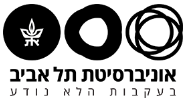The field of my research, previous, current and future, is the acoustic and articulatory aspects of natural language (phonetics), formal models representing these aspects (phonology), the perceptual nature of the interface between them, and the practical implications for all of the above.
My Ph.D. dissertation presents a formal model of similarity in phonology, based on the representation of acoustics and phonetics. I focused on loanwords, particularly with respect to vocalic patterns in adaptation (Cohen 2010). The data were primarily based on a corpus I constructed and empirical methods examining the hypotheses arising from the research. These two manners of research, corpus analysis and experimental work, are still my preferred approach to phonological analysis.
Following my Ph.D., my research shifted to the examination of various phonetic and phonological universals, a major issue arising from my dissertation. I dealt with stress in blends (Bat-El and Cohen 2012), and stress in Hebrew in general (Cohen and Ussishkin 2013), an issue I have recently returned to. I continued dealing with vowels and loanwords, primarily with universal constraints governing vowel harmony patterns in adult Hebrew (Cohen 2013a, Cohen 2013c). I proceeded to investigate general issues of vowel harmony, shifting my focus to language acquisition. An extensive corpus analysis of vowel harmony during acquisition, a previously little studied issue in Hebrew, shed some light not only on the nature of harmony in general and Hebrew in particular, but on the roles of universals during acquisition (Cohen 2013b).
I have recently concluded writing a series of papers (see publications) on various aspects of Modern Hebrew phonetics and phonology, focusing on Loanword Phonology, Stress, Rhotics and the Hebrew segmental inventory.
My current research focuses on Ultrasound Tongue Imaging (UTI) of Modern Hebrew, speaker variation, non-native speakers, Heritage speakers and bilingual speakers, contributing to a better understanding of the interactions between phonological systems. I plan on extending the study to clinical application of the UTI study.

![ד"ר אבן-גרי [אוון] כהן ד"ר אבן-גרי [אוון] כהן](https://humanities.tau.ac.il/sites/humanities.tau.ac.il/files/styles/research_teaser_image_180_x_180/public/_DSC3269%20-%20for%20sending%20%232.jpg?itok=pdReKEPQ)
